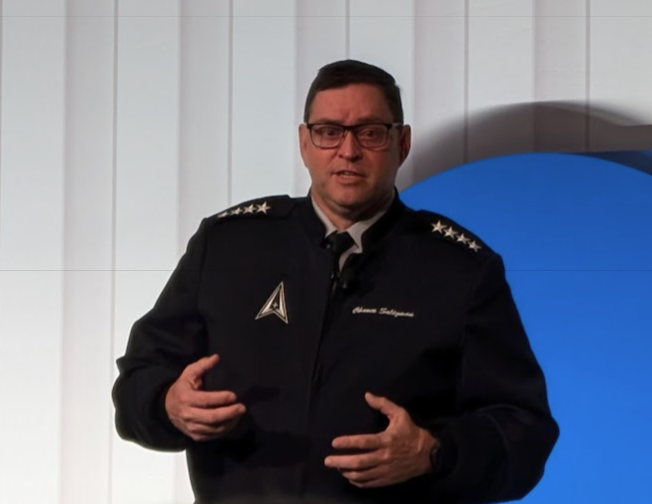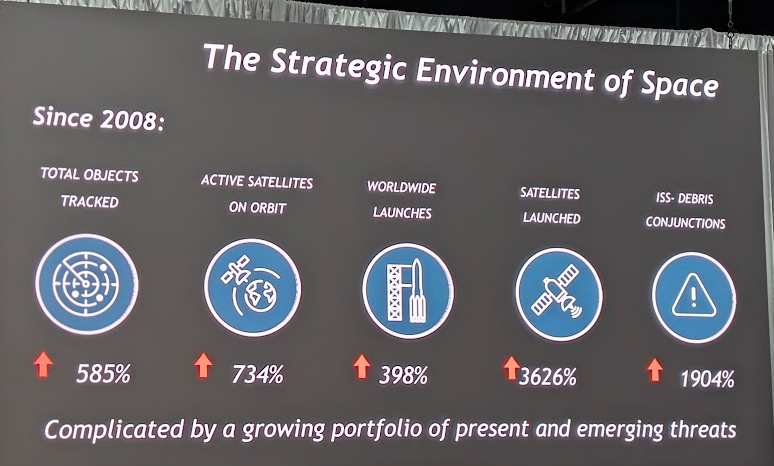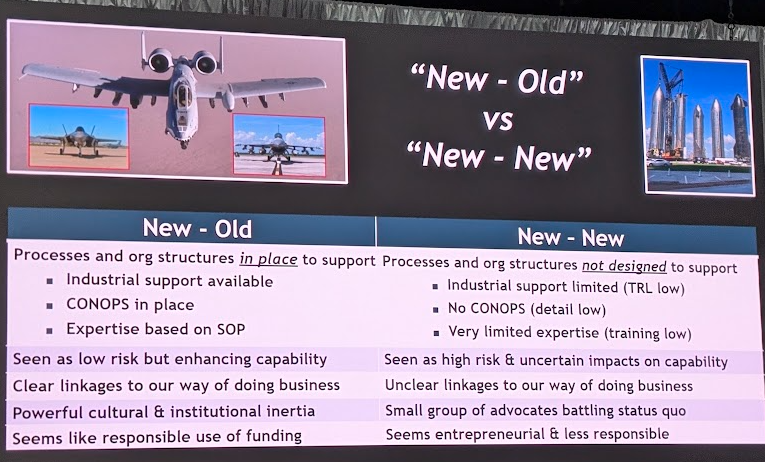General Chance Saltzman, Chief of Space Operations for United States Space Force, outlined the agency's increasing challenges, but noted that the innovation at scale and pace is possible with a public-private partnership.
 Speaking at the Google Public Sector Summit 2024 in Washington DC, Saltzman (right) hit on multiple themes that apply to the public and private sector, leadership and innovation within a large organization. Here's a recap of the Google Public Sector Summit:
Speaking at the Google Public Sector Summit 2024 in Washington DC, Saltzman (right) hit on multiple themes that apply to the public and private sector, leadership and innovation within a large organization. Here's a recap of the Google Public Sector Summit:
- Google Public Sector Summit: 9 takeaways you need to know
- Google Public Sector lands new clearances for Gemini, authorizations for Air Force Cloud One
- Google Public Sector: A look at the strategy
The Space Force recently outlined its pillars for change including developing science and technology processes and making them operational at pace and scale. Saltzman's talk was a few days after Space Force tested the X-37B Orbital Test Vehicle (OTV-7).
Here's a look at the key points from Saltzman's talk:
Scale issues and tracking threats. Saltzman said that about 2008, he was concerned that the database used to track space objects would struggle at 10,000. Today, that database is handling more than 40,000 objects. US Space Force is working with the private sector including Google Public Sector to scale and track the space traffic.
"The number of satellites launched has dramatically changed since I arrived in 2008. The cost per kilo to orbit has gone from $30,000 to $1,500 and these are game changing shifts in the space domain," said Salzman.
This chart tells the story.

The US Department of Defense works with multiple cloud vendors directly under its Joint Warfighting Cloud Capabilities contract vehicle.
Space security. Saltzman also said that GPS jamming and interference with satellite communications is also becoming a security threat. The threats to space infrastructure can also hamper operations on Earth. "It used to be that all we had to do was maintain access to space and then exploit it for its advantages," said Saltzman. "Today to control the domain and protect it, we have to deny an adversary. This control aspect is what has shifted."
Saltzman said space is now contested and that requires more technological prowess. Space used to require efficient services for navigation and communication, but the domain has transformed to be contested.
Innovation within government. Saltzman said, "the government does not innovate well." He added that budget and funding for projects are set up years in advance. "We write our requirements several years before the funding lines up. That creates problems with working capital and being more agile with our resources," he said.
Budget issues aside, innovation is also a mindset. The government is good at creating what Saltzman calls "new-old." In a nutshell, new-old refers to developing new versions of old capabilities. "We take the F-16 and we build the F-22. The system is designed that way. The industrial support is available and we have our concept of operations," he said. "It's all based on standard operating procedure and it is seen as low risk to enhance what we already have."
The catch is that space requires a system that's "new-new" and breaks from tradition. "You really need to break from your own patterns. No one in government wants to do risky things with taxpayer dollars," he said. "The system is designed to give you new-old."

Leadership and innovation. Saltzman said he is aiming to develop new kinds of leaders that can be innovative. "I ask questions like 'are we following tried and true processes?'" he said. "It's a leading question because then we're probably not right. If we start building requirements on things we know we're already off base. We're already going to limit the options of what's possible."
Thinking horizontally. Saltzman said his goal is to create a rethinking of operations that' s more horizontally so that you can deliver vertically to adapt to multiple use cases.
Saltzman's take rhymes with how companies are thinking through digital transformation, AI and cloud computing. Start small, notch wins and build capabilities. "You have to test assumptions and recognize that new-old is not innovation. It is not going to get us where we need to go," he said. "We're trying to put it in terms where it doesn't sound like change is inherently risky. We are already experiencing the risk.
Public private partnership. Saltzman said the private sector is critical to public sector innovation, but it will be frustrating at times. "Curb your frustrating working with the government. At least you get to go home to a different office," he quipped. "Nobody is more frustrated sometimes with the way we do our business. But periodically, I see value in the slow delivery process. We shouldn't be entrepreneurial with taxpayer dollars. Just recognize that together we can operationalize these good ideas."


